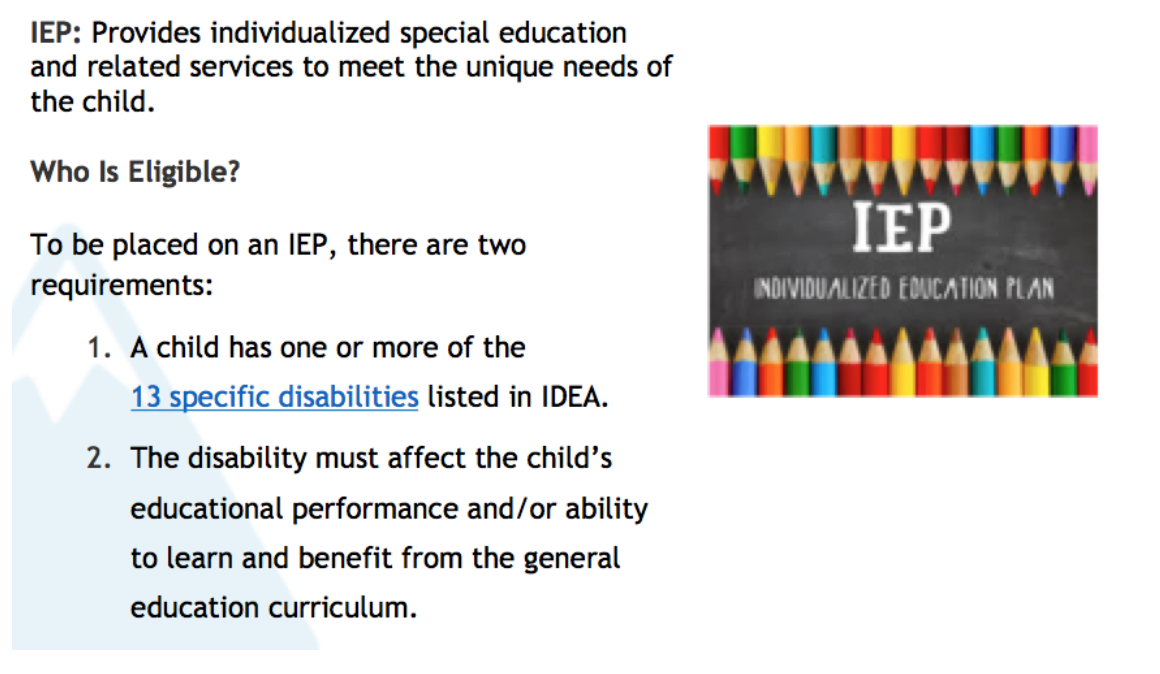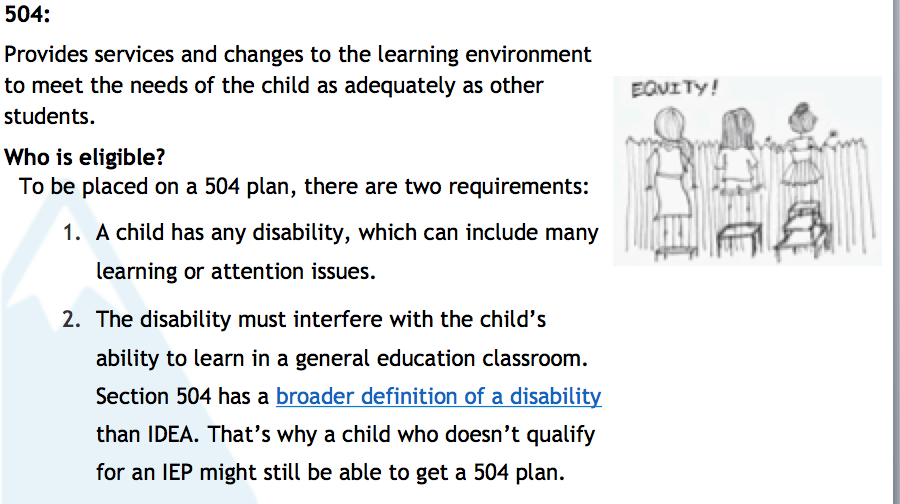Lesson 1: Building a Foundation
Individualized Education Plans (IEP) and 504 Plans
Students identified with a disability must have an individualized education plan (IEP). Following this plan is required. As you can see in the graphic below, to qualify for an IEP, a child must have one of 13 specific disabilities, and the disability must affect the child's ability to learn in the general education setting.

Because of their ability to compensate, and therefore, not fall behind in grade-level standards, 2e students often do not qualify for an IEP (unless their disability is physical, not a learning difference, such as dyslexia), but they still require accommodations or modifications. If a student has learning or attention issues and is struggling in school, and doesn’t qualify for an Individualized Education Program (IEP), a Section 504 plan may be a good alternative. This is especially true if the student already receives informal supports. Check with your administration about the process for qualifying students for 504 plans since districts/schools handle this process differently.
"Section 504's child find requirement is slightly broader than the IDEA's child find provision. While the IDEA only requires districts to identify and evaluate students suspected of needing special education because of a disability, Section 504 requires a district to identify and evaluate any student suspected of having a disability and needing special education or related services as a result" (Slater, 2020, p.8).

What is a Section 504 plan?
This type of plan falls under Section 504 of the Rehabilitation Act of 1973. Section 504 is the part of the federal civil rights law that prohibits discrimination against people with disabilities in programs that receive federal financial assistance, such as public schools. This includes students with disabilities such as learning and attention issues who meet certain criteria.
Much like an IEP, a Section 504 plan, or "504 plan," can help students with learning and attention issues learn and participate in the general education curriculum. A 504 plan outlines how a child’s specific needs are met with accommodations, modifications, and other services. These measures “remove barriers” to learning.
Section 504 states that: “No otherwise qualified individual with a disability in the United States, as defined in section 706(8) of this title, shall, solely by reason of her or his disability, be excluded from the participation in, be denied the benefits of, or be subjected to discrimination under any program or activity receiving Federal financial assistance…” [29 U.S.C. §794(a), 34 C.F.R. §104.4(a)].
What is an impairment under Section 504?
An impairment as used in Section 504 may include any disability, long-term illness, or various disorders that “substantially” reduces or lessens a student’s ability to access learning in the educational setting because of a learning-behavior or health-related condition.Keep in mind that a student with a 504 plan usually spends the entire school day in a general education classroom. Typically, children who need modifications would have an IEP, instead of a 504 plan.
For more information on Section 504 plans, visit the following website (optional resource)